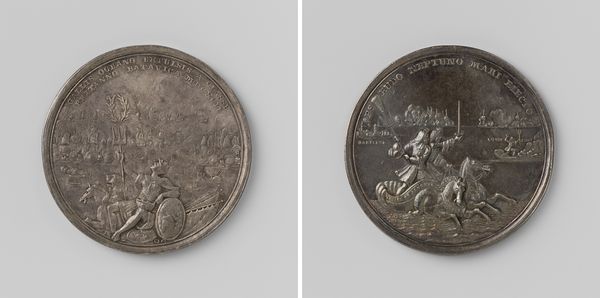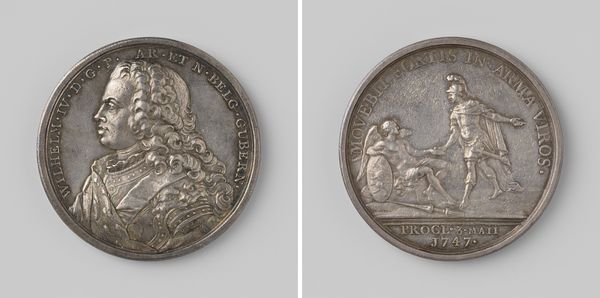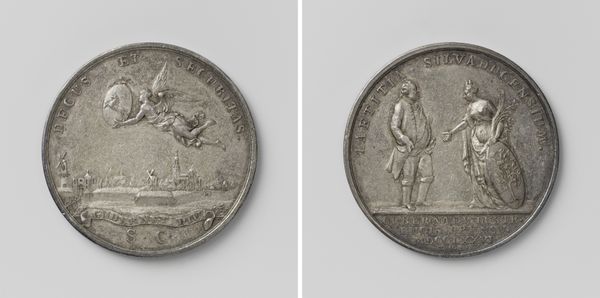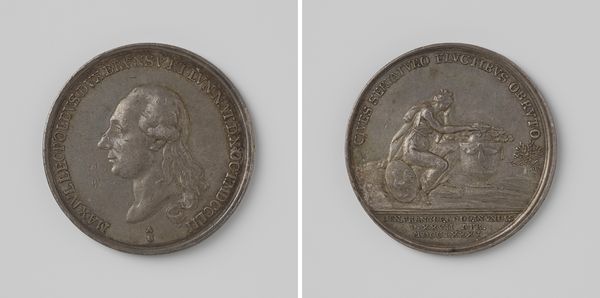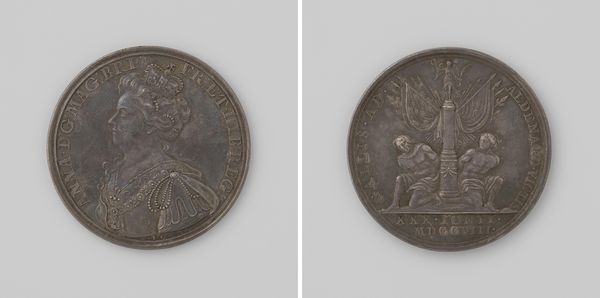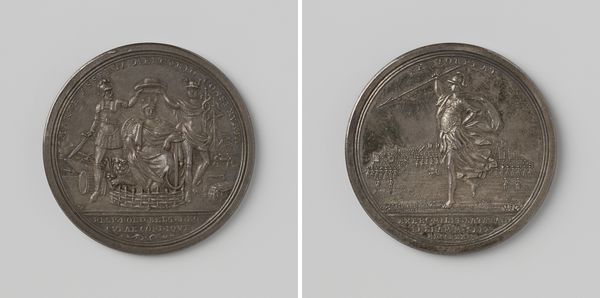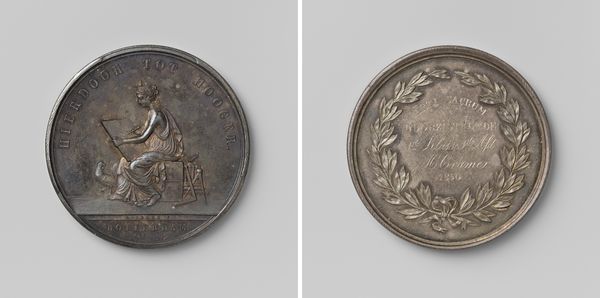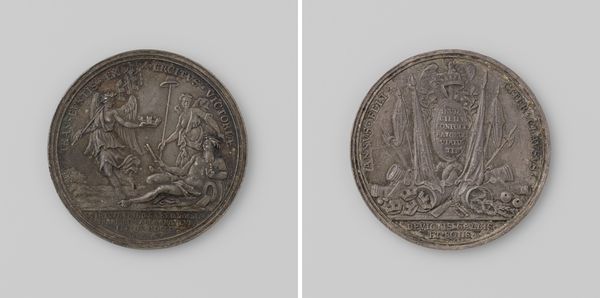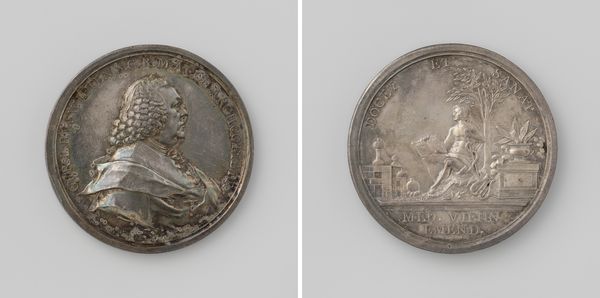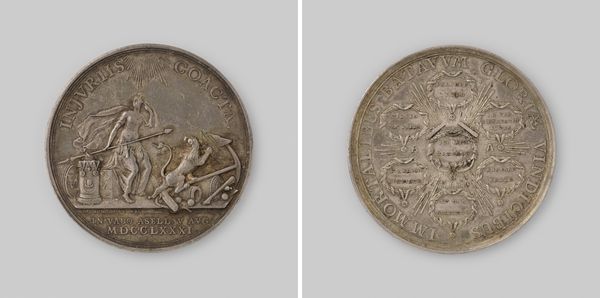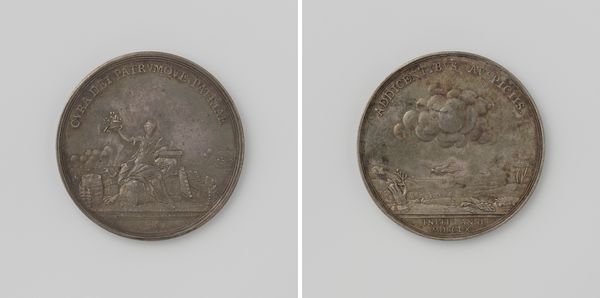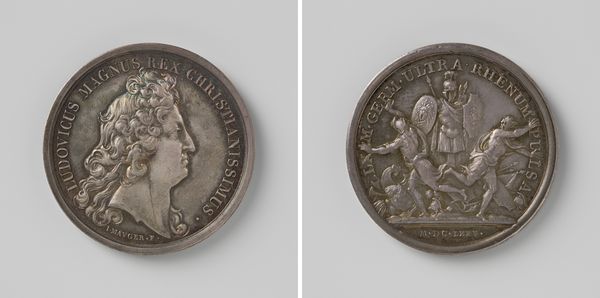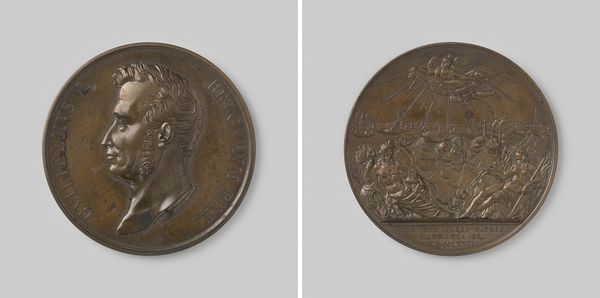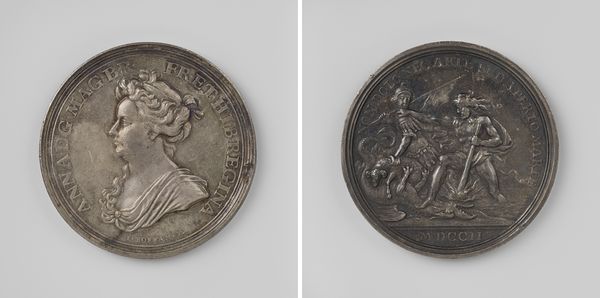
Johan Willem, keurvorst van de Palts, na de dood van keizer Jozef I aangesteld als stadhouder van Schwaben, Frankenland en de Palts 1711
0:00
0:00
metal, relief, sculpture, engraving
#
portrait
#
baroque
#
metal
#
stone
#
sculpture
#
relief
#
sculpture
#
history-painting
#
engraving
Dimensions: diameter 6.6 cm, weight 146.43 gr
Copyright: Rijks Museum: Open Domain
Curator: This piece is a Baroque metal relief from 1711 by Philipp Heinrich Müller. Its full title is: "Johan Willem, keurvorst van de Palts, na de dood van keizer Jozef I aangesteld als stadhouder van Schwaben, Frankenland en de Palts." Editor: It looks remarkably like a coin or a medallion, rendered in quite a solemn, stately manner. The use of metal grants the images a certain gravity. Curator: Absolutely. Note the clear divide in imagery between the two sides. The primary figure, Johan Willem, is on horseback, presented as a triumphant leader. What's most interesting to me is how this imagery ties into ideas of legitimate power during that period. The visual rhetoric surrounding leaders—especially after a succession crisis like the one following Emperor Joseph I’s death—is significant. Editor: From my perspective, consider how the material itself, most likely silver or a silver alloy, would have been mined, refined, and then skillfully worked. Metalworking was central to power during this period. Also, the scale seems so controlled—miniaturizing power for portability, transforming into a tool of distribution. It seems like a carefully manufactured object designed for trade and display. Curator: Intriguing point. Now turn your gaze to the reverse. We see two rather imposing figures, seemingly wrestling or pushing against a large globe. What could they signify in light of the Keurvorst’s rise? It suggests notions of bearing weight and collective governance. Editor: Those strained bodies make me think about the physical effort. Consider the labour required to strike such detail on a tiny disc, all rendered in an age before mechanization really took off. Who are these men, in a way, who actually physically made these? I find myself wanting to know their names and the actual methods they used. Curator: This detail certainly pulls back the curtain on labor dynamics. It serves as a reminder of not only artistic but social contexts. Thinking about cultural memory, these images served not only as symbols of power, but circulated ideas of what legitimate rule even looked like in a tangible way. Editor: So, what appeared like a commemorative piece gives you insights into cultural, even economic production...a reminder that art never emerges out of thin air. The means of producing this piece reflects the social reality. Curator: Precisely, it is a nexus of so many aspects of early eighteenth century society, and the visual representation reflects this. Editor: Yes, this coin shows more than meets the casual glance; this object really opens out.
Comments
No comments
Be the first to comment and join the conversation on the ultimate creative platform.
